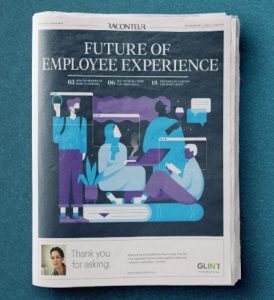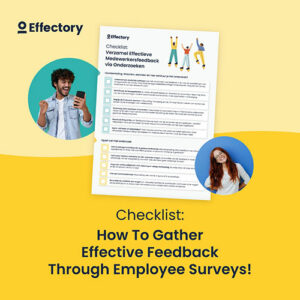I’m not a recruiter, I’m a marketer, who’s had plenty of time scouting the job market before landing a pretty sweet gig. Below I’ve drawn up my top 10 tips which are largely based off my own observations, pet-peeves and my time working for a leading HR company, and what they do really well.
Recruiting talent in 10 tips

1. Goals
Have a clear organizational goal. It’s a simple statement, but something that impacts employee commitment. If company goals are clear, the trickledown effect into goals of teams and functions will also be clear. Having clear goals, or objectives as a team will ensure that specific skillsets are fulfilled. Doing so can give teams a level of flexibility. For instance, they can hire freelancers rather than fill full-time position for their short-term needs. The costs of hiring a new employee are high, you don’t want to lose a new employee to disengagement a few months into their new role.
All you need to know about the onboarding process of new employees
Free Whitepaper: Attracting and retaining talent – 5 tips
Learn the best ways to attract and retain talent to your organisation with these 5 easy-to-follow tips to retain employees!
Download2. The job description
The goals of the team, impact the vacancies you’re trying to fill. Having a clear job description and importantly role responsibilities, is imperative. When filling a position, give clear indications on teamwork implications. Are they working with different teams or departments? Who will that person be reporting to? When hiring for a generalist position, try to purposefully limit the job responsibilities and building out with further development. Without having clear responsibilities for a role, you’re welcoming disengagement.
3. Pay
This naturally falls in line with seniority of the candidate and the role. All companies are looking for that unicorn applicant: young, specialized generalist, and inexpensive. Odds are, you can get away with two out of three, but finding the unicorn of candidates is rare. Instead, make sure that you offer ample opportunities for personal development and growth within the role. Of course, all employees need to have their financial basis covered, but for some the intrinsic value of their work outweighs salary needs.
Employee experience in 3 easy steps
Learn the best ways to improve the employee experience in your organization with these 3 easy-to-follow tips! Get your copy today!
Download: employee experience tips4. Perks vs. Culture
These days, employers tend to rely on perks to describe company culture. Perks can be nice, who doesn’t love unlimited vacation days, a company boat, or the rooftop terrace to enjoy your free lunches (Effectorians love their perks, and yes, we are hiring)? In fact, those perks are just things – and your company culture’s impact easily outweighs the perks in the long run. How’s the atmosphere within the building? How do people interract with each other, or with superiors? Can you feel tension or angst? Identifying your corporate culture and building out its strengths and healing weaknesses can be tough, but it will outweigh all the perks in the long run. Give candidates the chance to experience the company with a quick tour for example, so your company culture isn’t lost on them.
5. Flexibility
Nine to five doesn’t mean what it used to. These days, there’s a certain level of expectation of flexibility when looking at work-hours. My colleague Suzanne wrote a great piece about the office of the future. In it she looks at options like remote work while sitting in a traffic jam and thus the modernization of work itself. If you can, make a point to offer this in the role; providing your employees with the trust, and responsibility to fulfil their functions, flexibly.
Report: Future of Employee Experience
Download this special report about The Future of Employee Experience, as published in The Times.
Download6. Look internally
Often companies forget to look within their own borders for talent. Opening vacancies internally, and allowing room for employees who show an interest to development into new roles, can help trigger commitment and engagement to the company. Doing so continues to foster talent within the organization, as well as attracting eager and ambitious talent for your vacancies.
7. Be Findable
Post your vacancies on your website, that’s first. Then use job sites like LinkedIn, Glassdoor, Monster etc. to get further visibility on the vacancy. If you can, get your marketing team involved for some creativity in distribution to other channels, like using Facebook Ads for hyper-targeting your prospective candidates. If you’re trying to fill a lot of positions, investing in online advertising is the way to go. But be smart about advertising, take the time to make candidate persona’s. By building persona’s you’ll get an idea into what your candidate wants from the role, their goals, wants or current frustrations. You can even get an idea as to where or how they’re receiving their information.
8. Be direct
If you see a profile that suites the role you’re looking to fill, reach out to them directly. Ask to have a coffee/chat and make clear your intentions of filling the position. Perhaps they’re happy where they are, maybe they’re open to other options, or maybe they’re actively looking. You can’t know unless you ask, so take the time to be direct.
9. Respond promptly
Again simple, but really its overlooked all too often. Many times, a job is posted and an applicant submits their information, and then radio silence. This is a bad reflection on corporate professionalism, and the expectations of the candidate are immediately slashed by this bad experience.
Avoid this, and at lease set up an automated reply acknowledging that the application has been well received. In that response, set expectations that a response will be provided within a certain time frame, and importantly, follow through. People talk, and maintaining your employer branding is key. This is one way to make sure talent’s expectations are met from the start.
10. Flawless onboarding
We know that 86% of new employees will recommend their new employer to their network. This is a key period to make a strong impact on employer branding. That’s why having a solid onboarding process is key to not only attracting new talent, but keeping them. Onboarding isn’t about just sending them flowers, or hooking them up with branded swag on their first day. It’s a continual process of checking-in within their first weeks of employment, requesting and using their feedback to constantly improve.
All you need to know about the onboarding process of new employees
How to gather feedback from your employees
The definitive checklist for creating your employee engagement survey.
Download


